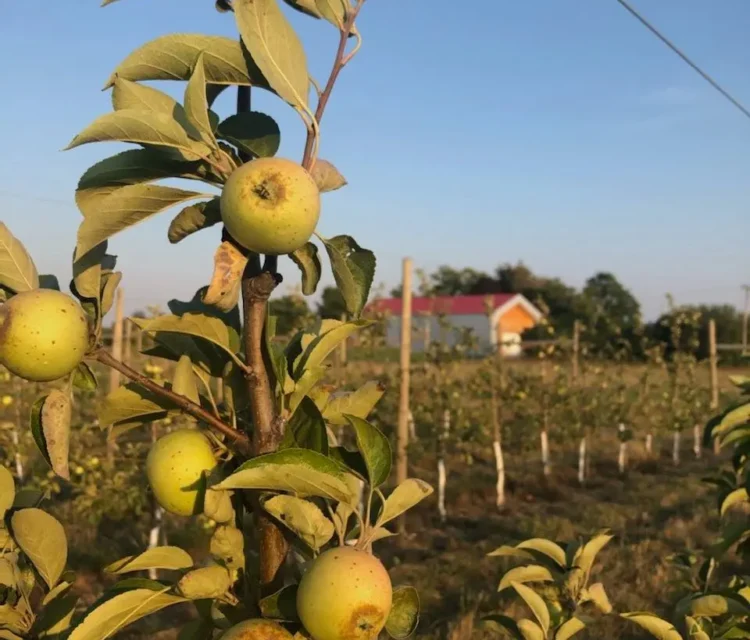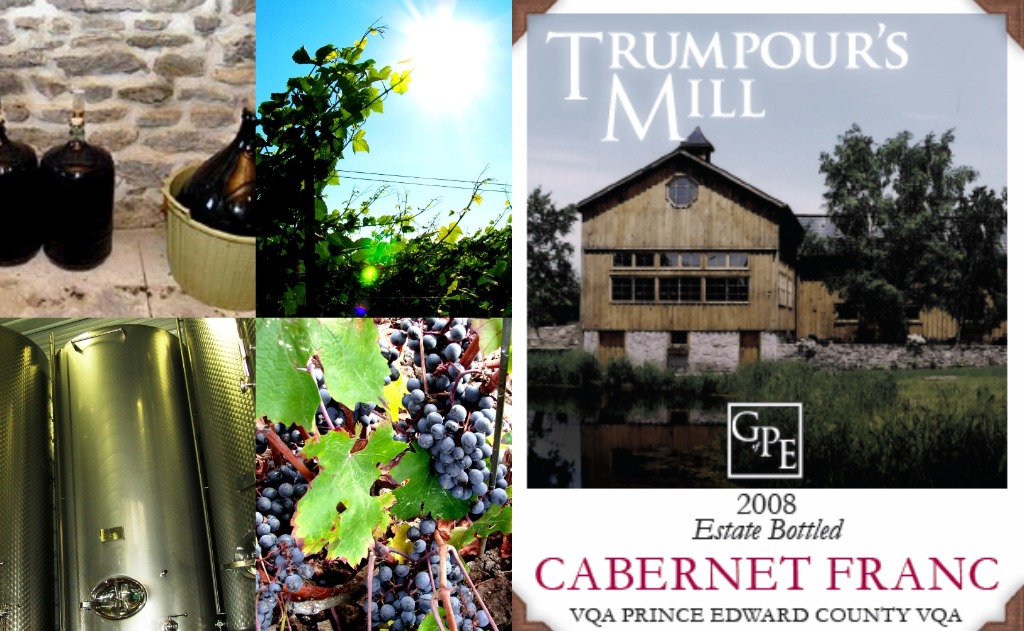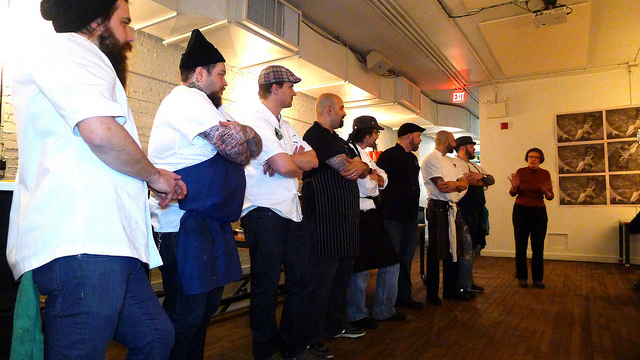I am unapologetically biased in my opinion that Ontario grows some of the greatest apples in the world.
I spent every fall of my childhood visiting orchards, especially those in the Blue Mountains, near Georgian Bay, sneaking as many apples as I could from the trees until my teeth felt like sponges. But despite my fervent passion for Ontario apples, I almost never drink Ontario apple cider. In fact I wrote off apple cider for many years, fatigued by the thin and lifeless cans that dot most LCBO shelves.
Then one day, I mistook a bottle of Normandy Cider, Le Père Jules, for a bottle of Saison, and the popping of that cork heralded a new chapter in my apple loving life. Earthy, nutty, mineral, intensely fruity and funky, this off-dry cider was full of power and texture, with bitterness and tannin to boot. Now THIS is the cider that I want to buy, so why aren’t we making it like this? As I delved into research, I quickly realized how complicated of a question I was asking. I reached out to few select producers for their wisdom and perspective as producers who are both pioneering the future of Ontario cider.
This will all go down easier with a spoonful of history.
French settlers planted Canada’s first apple, the Fameuse, in early 1600s Nova Scotia. Many years of cultivation and genetic selection later, nearly 20 different varieties of apples call Ontario home. However, none of these are cider apples, save but one.
Before the Fameuse, before the Honeycrisp, there was the humble Crab Apple, Ontario’s (and North America by extension) only native apple species. Ontario’s apple growing has primarily been focused on dessert apples, but traditional cider is usually made from a variety of apples ranging from bittersharp (the most acidic, and tannic) to bittersweet, sharp, and sweet. While historic regions like Basque, Normandy, or Somerset have been producing cider apples for hundreds of years, with orchards planted on century old rootstock, Ontario’s current cider orchards are in their infancy.
Loch Mór, run by UK natives Sara & Gary Boyd in the heart of Prince Edward County, are slowly building their orchard composed of traditional cider apples, experimenting with over 20 varieties since 2017. The results are impressive, producing complex fully dry ciders, some from single varietals. “The aroma and flavour are just so much more intense in comparison to other regions – the closest I’ve tried were from the Finger Lakes, NY” writes Sara Boyd, “it’s really interesting, as we start to get some of the production from our own orchard and have had the chance to compare versus the same variety from the UK, BC or Oregon, it is clear that the PEC terroir is adding to both the complexity and intensity in our apples. The shallow soil structure and dry, hot summers makes for some very delicious cider.”
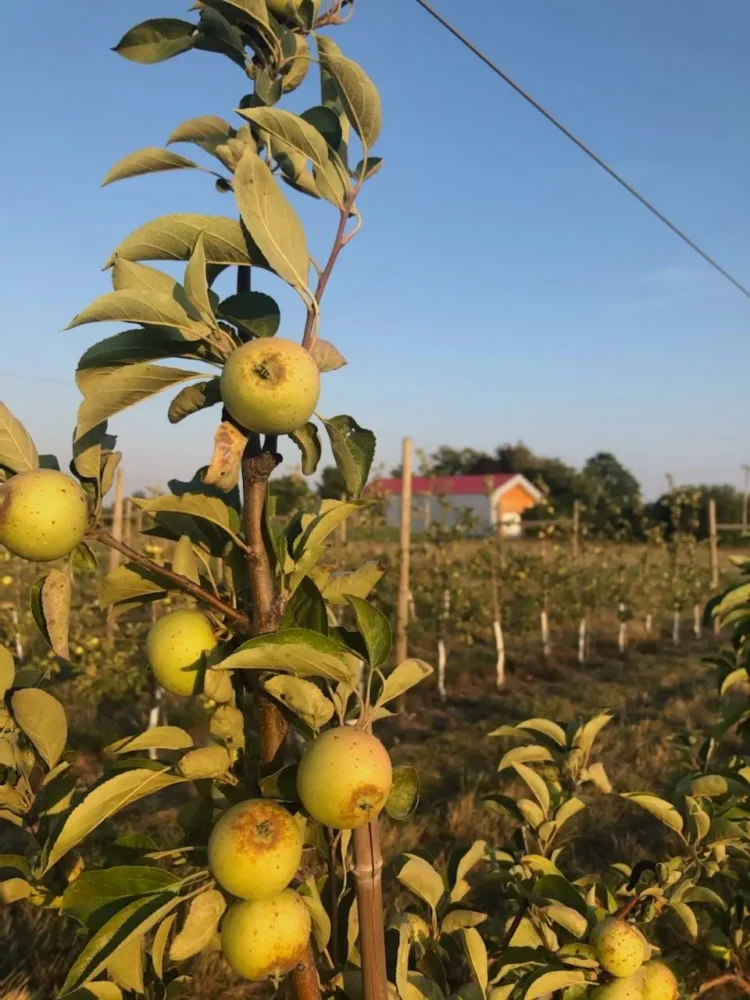
Brown Snout apples at Loch Mor’s orchard, a true English cider apple.
However, Sara goes on to illustrate that growing these varieties in Ontario has not been without its challenges: “We are still learning which varieties on which rootstocks are suited to our particular location. We have dry summers, so some of our European varieties on dwarfing rootstocks are not happy, whereas the same variety on a semi-dwarf rootstock is much more healthy. We have also found that some varieties are just too susceptible to some of the disease pressure we have in Eastern North America (in particular, fireblight). We had to cut out about 30% of our Yarlington Mill trees last year to stop the spread of fireblight to other trees in our orchard, which is heartbreaking.” While Loch Mór continues to take the risks and challenges that come with producing traditional ciders from their own orchards, other producers in Ontario are attempting to make complex cider with its own identity, while still paying respect to the original techniques.
Revel Cider, a Guelph based cider producer founded by Tariq Ahmed, is one of the most forward-thinking and talked-about cideries in the province. Revel sources 100% of their fruit and botanicals from Ontario, and while cider is in the name, Revel works with everything from wine grapes, to wildflowers and foraged fruit to produce their wild fermented fruit wines. Tariq spoke to me about his approach to terroir, the sense of place in a product, and it really struck a chord. He sees it like this; “you talk about terroir and how important the place is, but I think if you truly believe that you can’t look at just apples or pears or grapes, that’s less than 1% of the biodiversity of the region.
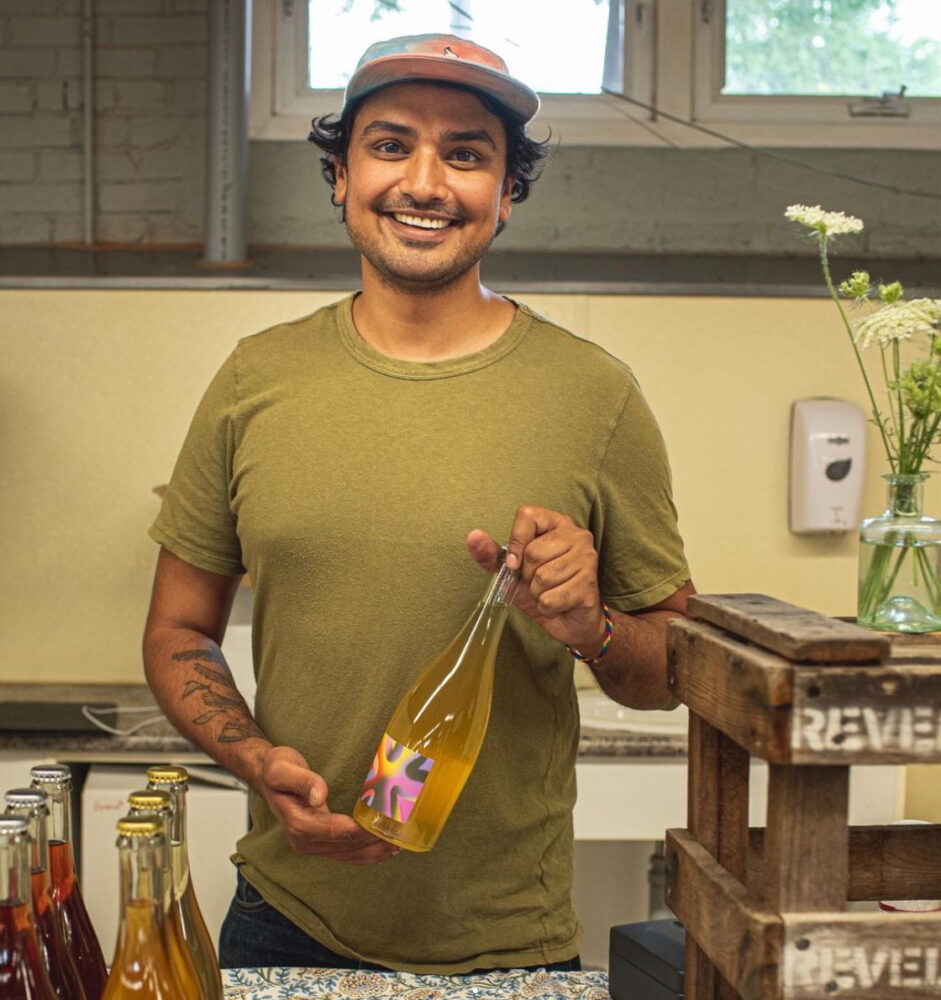
Tariq Ahmed, founder of Revel Cider, posing with the fruits of his labour.
If you’re going to talk about terroir and place, you need to talk about the botanicals, the flowers, everything.” This gives Revel the freedom to constantly explore new ideas, such as pulling tannin and complexity from wine grape skins, or fermenting ciders in spruce-sap lined amphora, a firm nod to the traditional Retsina of Greece. In fact I get a familiar feeling when I look at Revels portfolio, with rapid-fire, small batch releases being announced every month, I’m reminded of the peak days of Ontario craft beer, and I can’t help but wonder if many of the novelty seekers are shifting towards cider producers like Revel as their attention in craft beer wanes. Tariq feels this pressure as well, though Revel’s ambitious release schedule isn’t a product of him giving into the demands of the market, but a desire to work with everything he can. He elaborates, “Revel can seem turn and burn, but it’s funny that most of these projects are several years in the making… [our perry] took 7 years and we literally dumped thousands of litres of perry to get to the final product.
A farmer calls us and says they have green walnuts, or Morello cherries, yeah, I wanna use that and just learn as much as possible about these ingredients. It’s not about making something every week, but we want to work with every ingredient we can. If you live to a decent age, we have maybe 60 opportunities in a lifetime to work with these ingredients, that’s the pressure that we’re under. I don’t want to miss this.” Ontario might not have the land or the heritage as other cider regions, but it also has very few rules in cider making, and that leaves the game wide open for people like Tariq to define a new face for Ontario cider.
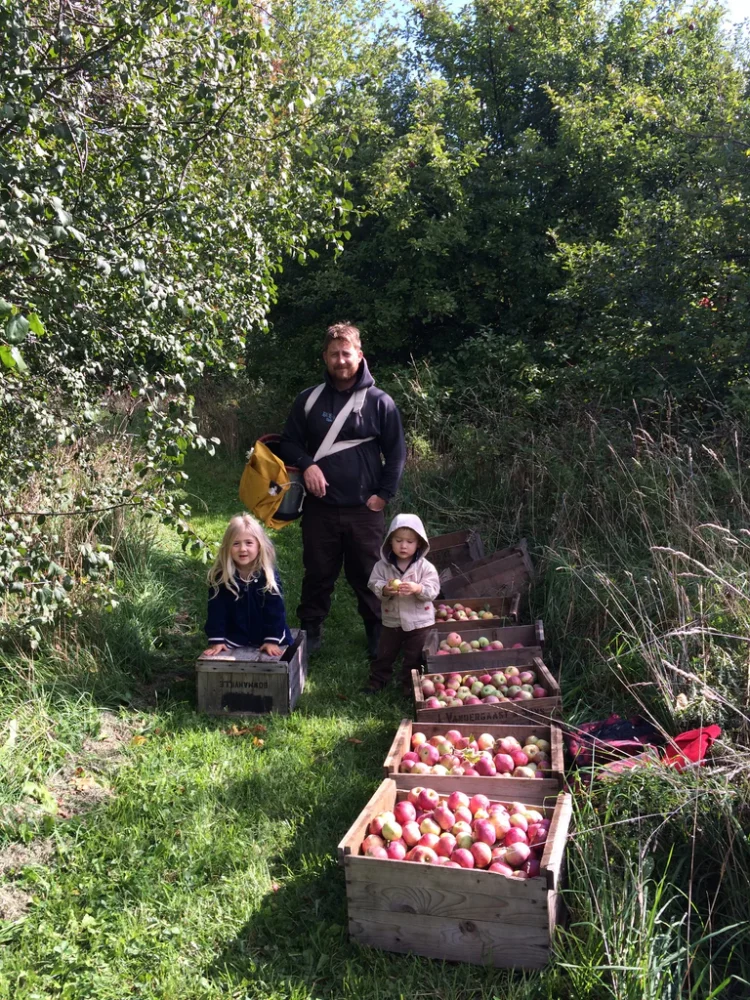
Windswept’s Mark Skinner, harvesting old-growth apples for his Lost Orchard series with his kids
The harder I look, the more visionary cider producers I find around Ontario, some in those fabled orchards of my childhood.
I had a quick chat with David from Grey & Gold and Mark and Courtney from Windswept Cider. Tucked into the bottom of Beaver Valley in the Blue Mountains, Grey & Gold Cider are using low-intervention, organic farming techniques to craft complex, compelling ciders. Grey & Gold planted their orchard in Spring of 2020 with 1,700 trees, including 29 different varieties of cider-specific and multi-purpose Heritage apples. Alongside the trees lie wild chamomile and spruce trees brimming with citrusy tips in the spring, all foraged for botanical infused ciders. This kind of holistic growing, allowing the orchards to assume their natural states and avoiding monocultures, may result in a slower harvest, but the fruit is worth it.
Just a stones throw away is Windswept Cider at the gateway to the Bruce Peninsula, in the heart of apple country.
The Blue Mountains microclimate is ideal for apple growing, and there are orchards just about everywhere you look. Windswept seeks out foraged heritage apples and fruit for their Lost Orchard series, a terrior driven series utilizing native, wild-growing fruit from their property and around Georgian Bay. The trees may not be as manicured as the orchards I’m used to, but Courtney says that’s where the real key to quality is. “That struggle develops character. Yeah, a tree might have some disease or blight, but the complexity and flavour is incomparable.” The overarching philosophy of both Courtney and David exemplifies what I’ve come to realize is really important in cider; using what’s around you. Despite popular belief, Ontario has an incredible bounty to offer, and even in our non-cider eating apples, complex, character driven cider, REAL cider, can be made with the right amount of care.
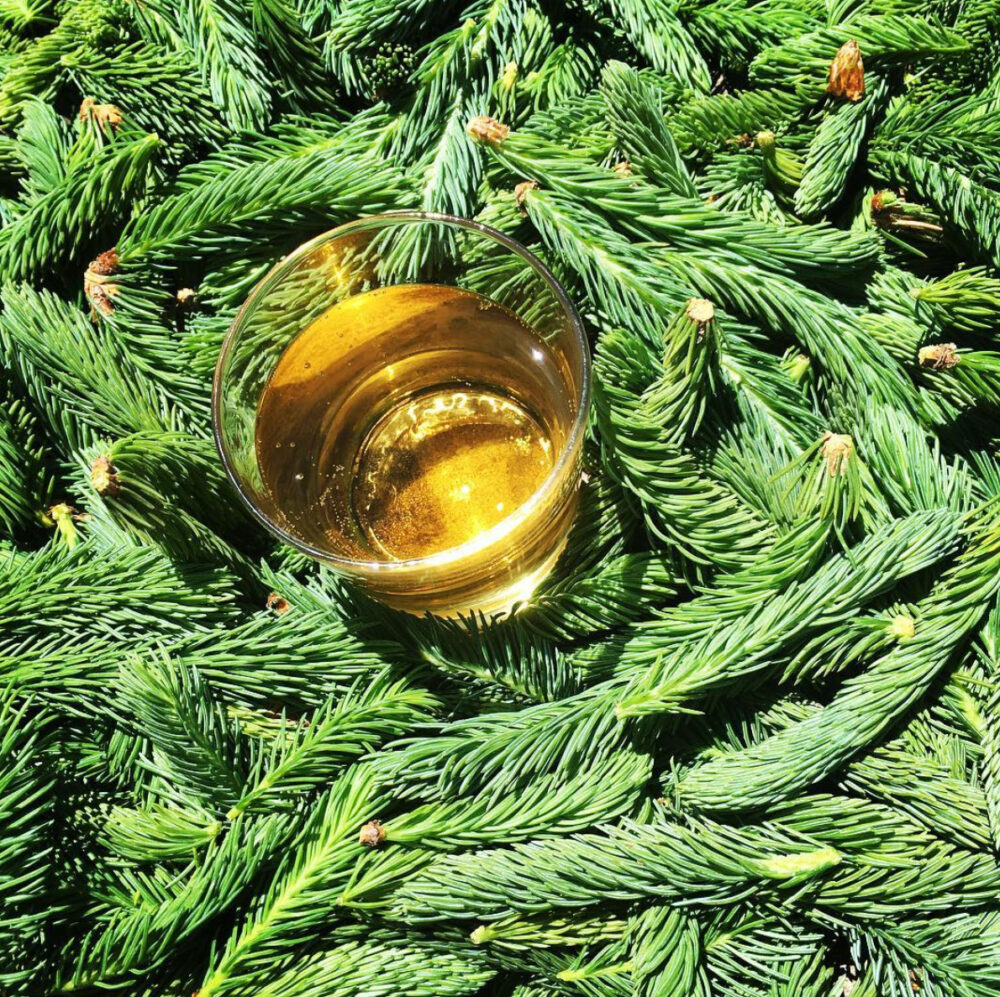
Grey & Gold harvest spruce tips from their own property to blend into the award winning Spruce of the Bruce cider.
This is a personal observation, but I feel like Ontario’s drinkers are ready to move into the world of cider. Whether it’s in the form of Loch Mór’s traditional cider and uncompromising ciders, Revel’s ingenuity and resourcefulness, Grey & Gold’s commitment to ethical farming and local botanicals, or Windswept’s keen eyes for finding fruit lost to time, people are ready, and interest is steadily growing with LCBO and independent sales of Ontario cider increasing every year.
The only thing that’s far behind the curve are the laws governing cider production. I never knew about this before Sara brought it up; “if the taxation burden was less on ciders (compared to wine or beer), it would be available in more formats and in more locations (restaurants, bottle shops, etc). Currently, if I take the cider I make and produce & deliver it to a restaurant down the road, the total taxes/fees that are taken off the price is 55%, which is outrageous.” If we want to move forward as a province, the fundamental laws need to be changed, either in the form of taxation reform for these producers, or a controlled regulating body like the VQA. One of the biggest steps forward in recent years has been the opening of independent bottle shops that allow small producers to shine, and slowly but surely a niche of hardcore cider fans is growing. Heck, just about every bottle of cider I’ve bought in the past year has been from these shops.
At the end of the day, I’ve come to feel this article is less about cider and more about Ontario. I love this land and its bounty, and I’m proud to be a part of it. I want those apples that I ate as a kid to be respected and utilized to their full potential. Ontario cider doesn’t have to emulate the ciders of Basque, or Normandy, but it has to be Ontario, true and absolute, and after speaking to the incredible and inspired producers above l, I feel rather hopeful.

